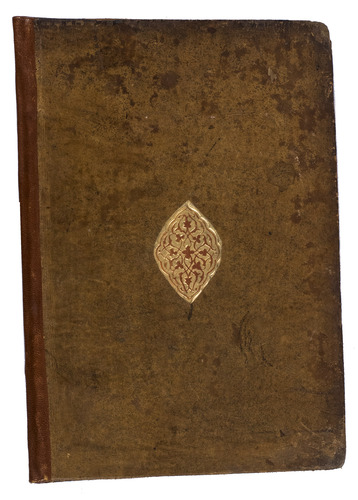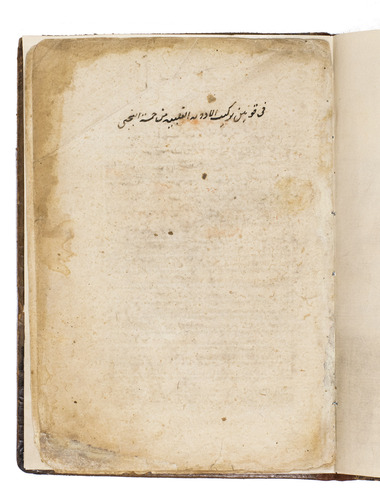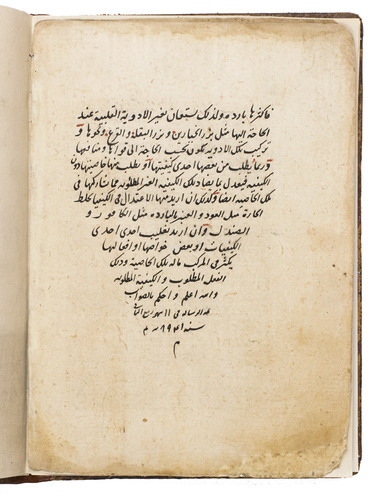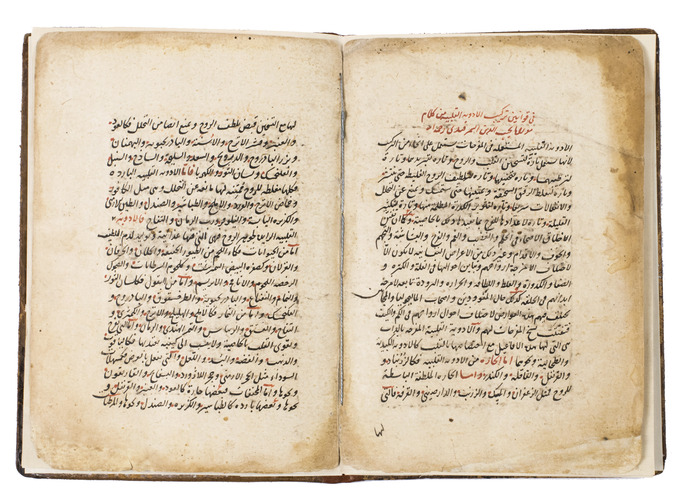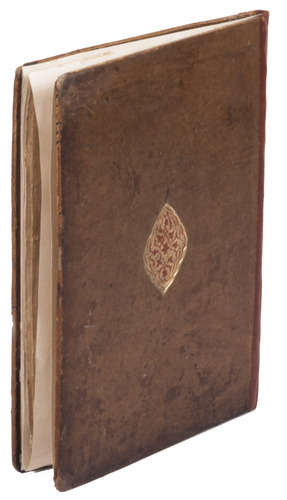[MANUSCRIPT - ARABIC]. AL-SAMARQANDI, Najib Al-Din.
[Arabic title in red]. [Fi-qawanin tarkib al-adwiyat al-qalbiya, minkalam Mawla-na Najib ad-in al-Samarqandi = Rules for the making of heart drugs from the words of our Revered Master Najib ad-Din al-Samarqandi].
[Iran/ Iraq?], (colophon:) 11 Rabi ath-Thani 894 AH [= March 1489 CE]. 8vo. Arabic manuscript written in black ink, rubricated throughout, in a small and neat naskh Arabic hand (19 lines per page with corresponding blind ruling visible in the paper). 18th-century(?) sprinkeled brown calf with a gold- and red-tooled arabesque center-piece on both boards, modern reddish-brown calf spine. [4] pp.
€ 12,000
Exceptionally rare and almost unknown medicinal treatise by Najib Al-din Abu Hamid Muhammad b. Ali b. 'Umar Al-Samarqandi (?-1222), an important Persian physician who lived during the Islamic Golden Age (8th century-13th century CE). It discusses different heart medicines, primarily herbs and spices, including their use, composition and dosage. The text is complete and only known in manuscript form. We have not been able to trace any other copies in sales records of the past 100 years.
Al-Samarqandi was born in Samarqand, in current day Uzbekistan, which was then part of Persia. He was an outstanding physician and a prolific medical writer. His most well-known work is Kitab Al-asbab wa'l- 'alamat ("The book of causes and symptoms"), which was widely read and commentarised in the Arab world for centuries. Little else is known about Al-Samarqandi's, except that he, together with almost 1,5 million other Persians, died violently during the Mongol conquest of Herat, in present day Afghanistan. The Mongols completely sacked Persia in the years after this attack. They destroyed many libraries and cast their contents into the rivers. As a result, many Persian scientific works were lost. Al-Samarqandi's work, however, as one of the few sources left from that time period, preserves the knowledge of drugs and other chemicals known to Persians at the time.
The edges and corners of the boards are slightly scuffed and the spine has been restored. The lower outer corner of the title-page has been restored, without affecting the text. The manuscript is somewhat browned throughout and the edges of the leaves are stained. Otherwise in good condition. Cf. Levey, M. and Al-Khaledy, N, The medical formulary of Al-Samarqandi, 1967, pp. 13-18.
Related Subjects:





